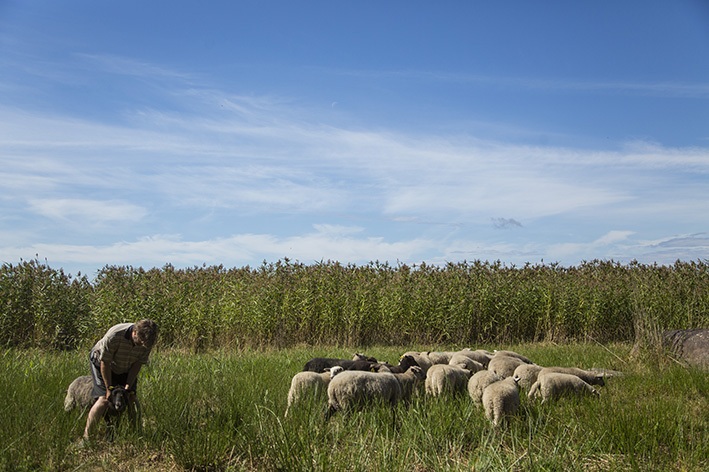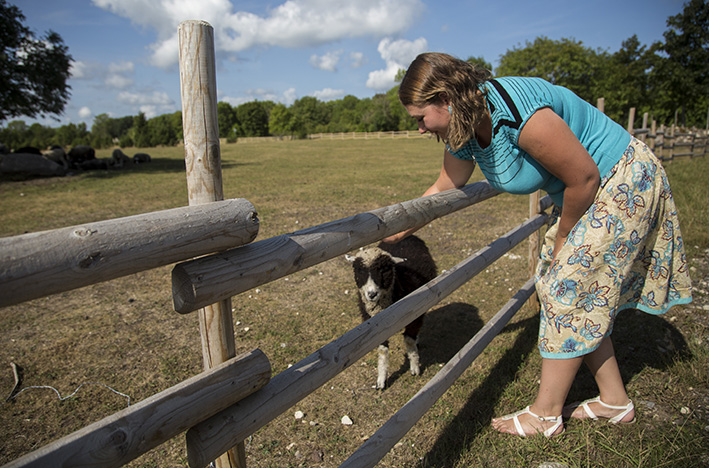Go-Far 2018: Eye on Estonia

Hobby farmers pay to work the land
More work in the countryside in summer, to restore and beautify farmlands
Story and photos by Ignatius Koh
More city dwellers in Estonia are buying or renting land in the countryside to farm during the summer months of June to August. They are not doing it to earn extra money — rather, they form a group of people known as hobby farmers, who log, rear farm animals and live in farmhouses as a pastime.
These people are moving to the countryside during the summer due to higher incomes, which increase their ability to travel, and deeper knowledge about the importance of environmental sustainability, said Professor Kadri Kask, 48, a lecturer at the Estonian University of Life Sciences in Tartu.
Prof Kask and her husband Valdo Kuusemets, 56, who is also a professor at the university, spend their summers on Muhu, Estonia’s third largest island, where they care for 150 sheep on a rented plot of farmland.
Another reason for the summer migration is the huge importance of nature to Estonians, as almost half of their country is covered by forests, added Prof Kuusemets.
Weeding out challenges
Hobby farmers like Prof Kask and Prof Kuusemets have struggled to fund their rural summer activities, which can often be expensive.
They need to clear trees for their sheep to graze on open plots of land. However, they do not own machines that can log these trees, and have to hire people to do the job, said Prof Kuusemets.
The average cost of hiring professionals to clear the land is 1,700 euros per hectare, but the couple paid 2,500 euros, he added.
However, funding provided by the Environmental Board of Estonia helps to alleviate their financial burden. The government agency is in charge of “LIFE to alvars”, the largest wildlife restoration project in Europe.
Backed by the European Union (EU), the project was launched in 2014. It aims to restore 2,500ha of alvar grassland, a type of coastal meadow next to the sea, in 25 restoration areas in Estonia by 2019.
Restoration areas comprise of two on the mainland, and 23 spread over three islands: Muhu, Saaremaa and Hiiumaa.
The Environmental Board pays hobby farmers to clear grasslands overgrown with shrubs and pine trees. Farmers can use the money to rent private properties of land for their farming activities.

Ms Holm with a sheep from a hobby farmer’s flock.
She regularly checks on the progress of their farms.
Under the “LIFE to alvars” project, hobby farmers are also taught to operate machinery and care for animals, said project coordinator Annely Holm, 35.
“We trained farmers so that they know how short a stump should be, and how to clear the area such that only 20 to 30 per cent of shrubs and trees are left,” added Ms Holm.
There are about 60 groups of farmers who are working on “LIFE to alvars”.
A price to pay
While hobby farmers on islands like Muhu receive financial support, some must farm with their own resources. For example, hobby farmers in Juminda, a rural area in northern Estonia’s Lahemaa National Park, do not receive financial aid.
There are only 70 permanent residents in Juminda, but the area receives hundreds of hobby farmers every summer.
An example is Mr Piet Boerefijn, 55, a Dutch national who has lived in Estonia for 25 years. He has spent the past 20 summers restoring his land, which is part of a wooded meadow in Juminda’s Leesi village, with nothing but chainsaws and sheep.
When summer is over, Mr Boerefijn returns to Tallinn, where he lives. The managing director of the Estonian Food Bank, he collects excess food and redistributes it to the poor during the winter. He enjoys hobby farming, as it is a pleasant break from his full-time job, though it is hard work, he said.
“It’s a hobby as not much money is earned — one kilogramme of wool brings only 60 cents, and you have to pay for sheep food and materials to build fences,” Mr Boerefijn added.
Mr Boerefijn added that hobby farming is not cheap, especially during periods of low rainfall and high temperatures.
However, help might be on the way for farmers in Juminda. In June, the Environmental Board submitted a proposal to the EU in request of funds to restore wooded meadows like those in Juminda.
If its bid is successful, a project similar to “LIFE to alvars” will be carried out from August next year, giving the hobby farmers in Juminda a timely financial boost.
For now, farmers like Mr Boerefijn are content with beautifying their countryside at their own pace, with their current resources.
Mr Boerefijn said: “I’m Dutch and I love nature, but I know this is of emotional value for Estonians as it is a part of their heritage, so we will stick together and help each other.”